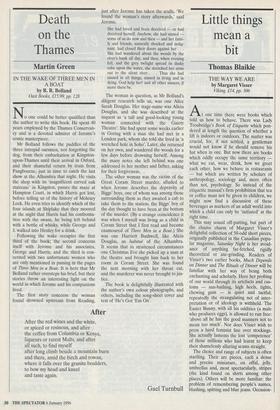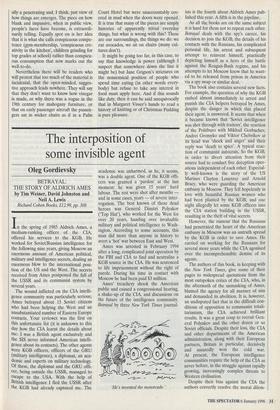Little things mean a bit
Thomas Blaikie
THE WAY WE ARE by Margaret Visser Viking £14, pp. 306 A, one time there were books which told us how to behave. There was Lady Troubridge's Book of Etiquette which pon- dered at length the question of whether a lift is indoors or outdoors. The matter was crucial, for, if not settled, a gentleman would not know if he should remove his hat when in one. But now there are books which oddly occupy the same territory what we eat, wear, drink, how we greet each other, how we behave in restaurants — but which are written by scholars of anthropology, sociology and, more often than not, psychology. So instead of the etiquette manual's firm prohibition that tea or coffee must not be given to children, we might now find a discussion of these beverages as markers of an adult world into which a child can only be 'initiated' at the right time.
This may sound off-putting, but part of the elusive charm of Margaret Visser's delightful collection of 50-odd short pieces, originally published in the Canadian popu- lar magazine, Saturday Night is her avoid- ance of anything far-fetched, rigidly theoretical or axe-grinding. Readers of Visser's two earlier books, Much Depends on Dinner and The Rituals of Dinner will be familiar with her way of being both enchanting and scholarly. Here her probing of our world through its artefacts and cus- toms — sun-bathing, high heels, tights, chewing gum — is quiet and tactful; repeatedly the strangulating net of inter- pretation or of ideology is withheld. The Easter Bunny, with all his oddities (a male who produces eggs), is allowed to run free: `above all he has the good manners not to mean too much'. Nor does Visser wish to press a hard feminist line over stockings. She actually laments the lost 'competence' of those millions who had learnt to keep their shamelessly alluring seams straight.
The choice and range of subjects is often startling. Their are pieces, each a dense and precise miniature, on offal, jelly, umbrellas and, most spectacularly, stripes (the kind found on shirts among other places). Others will be more familiar: the problem of remembering people's names, blushing, spitting and blue jeans. Occasion- ally a penetrating and, I think, just view of how things are emerges. The piece on how blank and impassive, when in public view, people's faces have become, is extraordi- narily telling. Equally spot on is her idea that it is what she calls conspicuous compe- tence (gym-membership, 'conspicuous cre- ativity in the kitchen', children grinding for top grades at school) rather than conspicu- ous consumption that now marks out the well-to-do.
Nevertheless there will be readers who will protest that too much of the material is incidental, that the open-minded, sugges- tive approach leads nowhere. They will say that they don't want to know how vinegar is made, or why there was a vogue in the 19th century for mahogany furniture, or that on early passenger aircraft the passen- gers sat in wicker chairs as if in a Palm Court Hotel but were unaccountably cov- ered in mud when the doors were opened. It is true that many of the pieces are simply histories of apparently trivial everyday things, but what is wrong with this? These are our surroundings, the things we do: we eat avocados, we sit on chairs (many cul- tures don't).
It might be going too far, in this case, to say that knowledge is power (although I suspect that somewhere down the line it might be) but Jane Grigson's strictures on the nonsensical position of people who spend time eating (in other words every- body) but refuse to take any interest in food must apply here. And if this sounds like duty, then it can be said unequivocally that in Margaret Visser's hands to read a history of knitting or of Christmas Pudding is pure pleasure.



















































 Previous page
Previous page